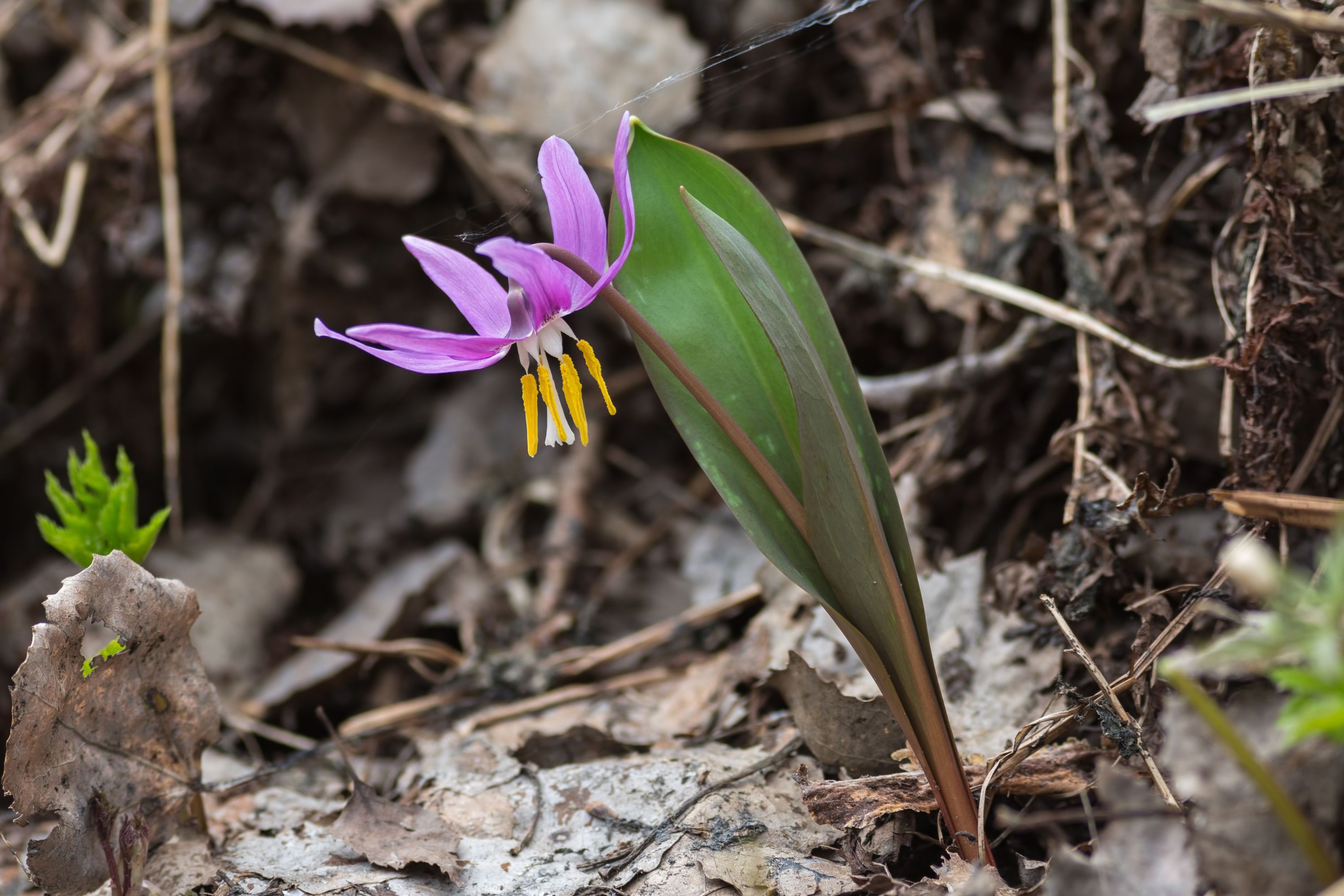Siberian fawn lily
(Erythronium sibiricum)

Description
Erythronium sibiricum is a species of flowering plant in the family Liliaceae. It is commonly known as the Siberian fawn lily, Siberian adder's tongue or dog's tooth violet. It is a perennial herbaceous plant that is native to Siberia, northern China, Korea, and Japan. Erythronium sibiricum is a popular ornamental plant, particularly in rock gardens and woodland gardens. It is also used in traditional Chinese medicine. Taxonomy Erythronium sibiricum was first described by Carl Linnaeus in 1753. The species name "sibiricum" refers to its native range in Siberia. The genus Erythronium is in the family Liliaceae, which is a large and diverse family of flowering plants. Other common names for Erythronium sibiricum include Siberian fawn lily, Siberian adder's tongue, and dog's tooth violet. Description Erythronium sibiricum is a bulbous perennial herbaceous plant that grows to a height of 10 to 25 cm. It has basal leaves that are lanceolate in shape and grow up to 10 cm long and 3 cm wide. The leaves are dark green with white markings and have wavy margins. The flowers of Erythronium sibiricum are solitary and nodding, with six petals that are yellow or white in color. The petals are lanceolate and have wavy edges. The flowers are 2 to 4 cm in diameter and appear in spring, usually in April or May. The fruit is a capsule that contains several small, black seeds. Distribution and Habitat Erythronium sibiricum is native to Siberia, northern China, Korea, and Japan. In its native range, it is found in open forests, meadows, and on rocky slopes. It prefers moist, well-drained soils and partial shade. It is hardy to USDA zones 3-9 and can be grown in a variety of soils, including sandy, loamy, and clay soils. Cultivation Erythronium sibiricum is a popular ornamental plant, particularly in rock gardens and woodland gardens. It is also used in traditional Chinese medicine. It can be grown from seed, but it is more commonly propagated by bulb offsets or division. The bulbs should be planted in the fall, at a depth of 8 to 10 cm, and spaced 10 to 15 cm apart. Erythronium sibiricum prefers partial shade and moist, well-drained soils. It is relatively easy to grow and requires little maintenance. Uses Erythronium sibiricum is used in traditional Chinese medicine to treat coughs, bronchitis, and other respiratory ailments. It is also used to improve blood circulation and relieve pain. The bulbs of Erythronium sibiricum are rich in starch and can be used as a food source. Additionally, Erythronium sibiricum is a popular ornamental plant, particularly in rock gardens and woodland gardens. Conservation Status Erythronium sibiricum is not considered to be threatened or endangered. However, like many wild plant species, it is at risk from habitat loss and over-collection. In some areas, Erythronium sibiricum is protected by law, and collecting or trading in wild plants is illegal. Conclusion Erythronium sibiricum is a beautiful and useful plant that is native to Siberia, northern China, Korea, and Japan. It is a popular ornamental plant, particularly in rock gardens and woodland gardens, and is also used in traditional Chinese medicine. Erythronium sibiricum is relatively easy to grow and requires little maintenance.
Taxonomic tree:







